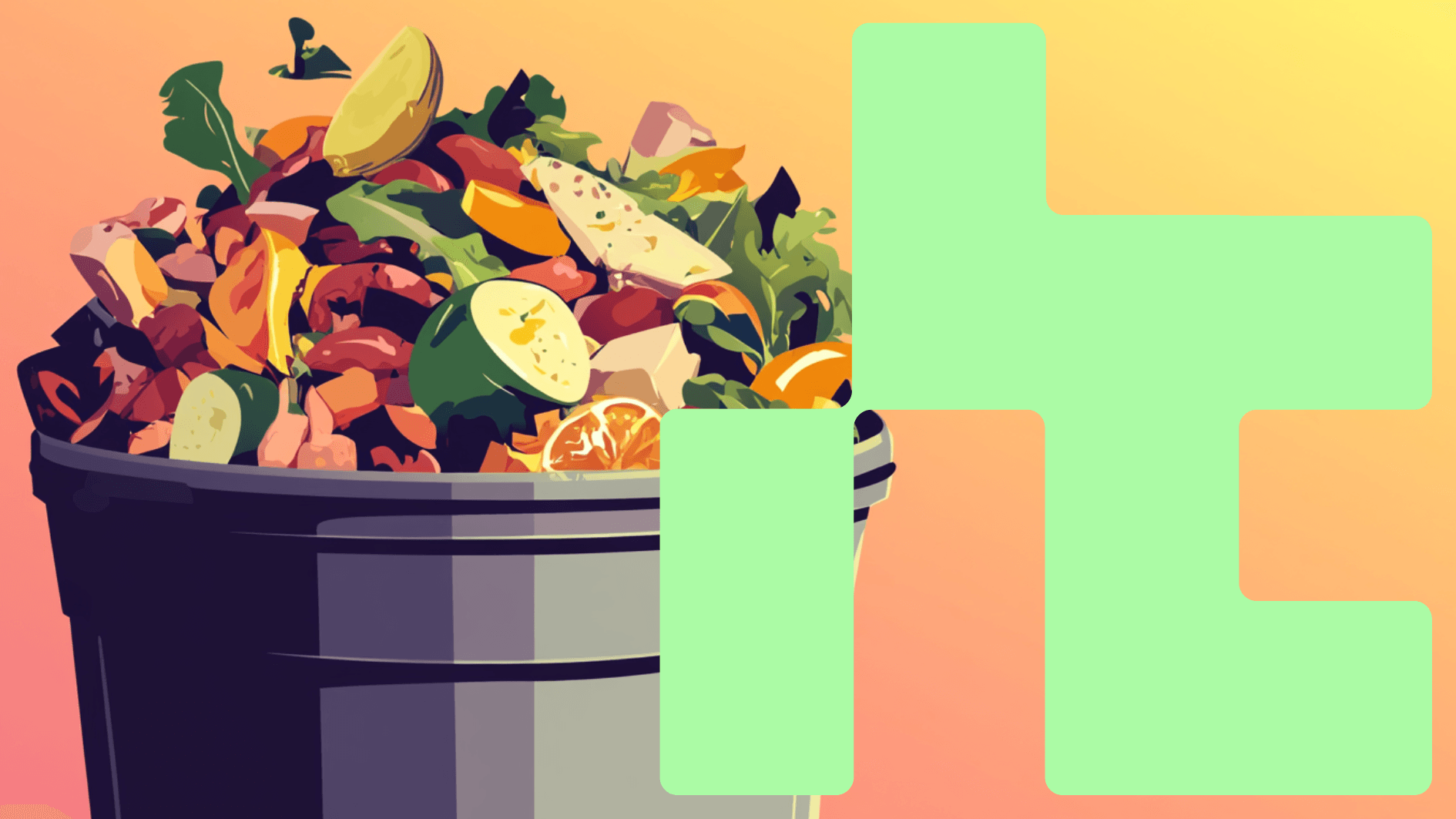Food waste in Dutch supermarkets decreased - but much remains to be done
For the first episode of Behind the Figures, we look into food waste. Starting from the figures of a recently published report.
Published on September 24, 2024

Mauro swapped Sardinia for Eindhoven and has been an IO+ editor for 3 years. As a GREEN+ expert, he covers the energy transition with data-driven stories.
In 2023, only 0.89% of the food purchased by Dutch supermarkets was wasted. The figure comes from a report recently issued by the Wageningen University and Research (WUR). This share refers to procurement volume, the amount of food supermarkets purchase from their suppliers for resale to their customers.
Since 2018, WUR has been surveying food waste in Dutch supermarkets, commissioned by the Food Waste Free United Foundation and the Dutch Food Retail Association (CBL). The trend is overall positive, as food waste in supermarkets has decreased by 35% since the first measurement. Using the European definition of food waste—all food that doesn’t reach humans or animals—in 2018, around 1.2% of the total goods bought by supermarkets were lost.
The United Nations (UN) wants to cut global food waste, at retail and consumer levels, by half by 2030. This is one of the sustainable development goals set by the organization, which agriculture ministers of the European Union countries adopted in 2015. Since then, the Dutch government has restated its willingness to comply with the directive.

About Behind the Figures
In Behind the Figures, we examine one figure in every episode. Using charts and graphs, we break down the figures and provide context to help you make more sense of them.
Food Waste Free United Foundation director Toine Timmermans underlined how the overall reduction of food waste aligns with supermarkets’ efforts to comply with norms such as the Corporate Social Responsibility Directive (CSRD). Let’s have a more detailed look at the figures reported by the survey.
Bake-off products are the primary source of food waste
Overall, the highest share of wasted food comes from short-perishable goods. Bread, pastry, and part-baked bread are the least efficient categories, followed by vegetables and fruits. The two combined make up over 70% of the food lost in supermarkets. Conversely, beverages are the food category whose losses are the lowest.
The general decline in food waste also aligns with the efforts to curb waste in the least efficient categories. Since 2021, major retailer Albert Heijn has been selling the day before’s bread for a discounted price. As a result, bread waste decreased by 16% in 2023 – a drop to 6.5% from 7.8%. Similarly, the report underlines the strides to diminish meat and fish leftovers by improving stock management, which showed a 37% waste reduction compared to 2022.
The wider reality of food waste
Yet supermarket waste is only a share of food waste. Due to inefficiencies, losses can be traced throughout the supply chain, from production to household consumption. Pests and extreme weather conditions can result in losses in the production process. Retailers' high standards for products—vegetable size and appearance—and poor shopping planning are some examples. The list can go on.
In the EU, 131 kilograms of food are lost per capita every year, according to the Eurostat data institute. This means that over 58 million tonnes of food wasted are generated annually in the bloc, where 37 million people can’t afford a quality meal every second day.
Dutch figures are higher than the average European ones. According to Eurostat, in 2021, the Netherlands generated 148 kilograms of food waste per capita.
Where does most food waste happen?
Undoubtedly, the food value chain needs to optimize its processes to curb losses. However, households generate most waste, which is generally true in nearly all EU countries. Breaking down the average 131 kilograms of food waste every EU citizen produces, we find that 70 are thrown away in households.
In the Netherlands, over 2.5 million tons of food waste were generated in 2021. The largest share can be attributed to the manufacturing and producing stage, with a third still wasted by households. In Belgium, waste related to production accounts for over two-thirds of losses. In Germany – which produces over 10 million tonnes of food losses – most waste is produced in households.
How is the problem being tackled?
Last June, the European Council adopted its position (general approach) on the revision of the waste framework directive (WFD). The WFD defines waste management principles, including recycling and recovery definitions.
The proposed directive, which came as a revision of the previous-existing one, set binding targets for food waste reduction by 2030. The bill proposed a 10% cut in processing and manufacturing and a 30% reduction per capita in retail, restaurants, food services, and households compared to 2020 levels. The council agreed with the targets set by the Commission, providing the possibility to define goals by the end of 2027 when the Commission will review the 2030 objectives.
The final text will come to life in the recently inaugurated legislative cycle. Although supermarkets are embracing AI to match demand and supply or better organize their stocks, much of the success of target compliance will depend on each of our actions, such as consuming smarter and limiting losses.
